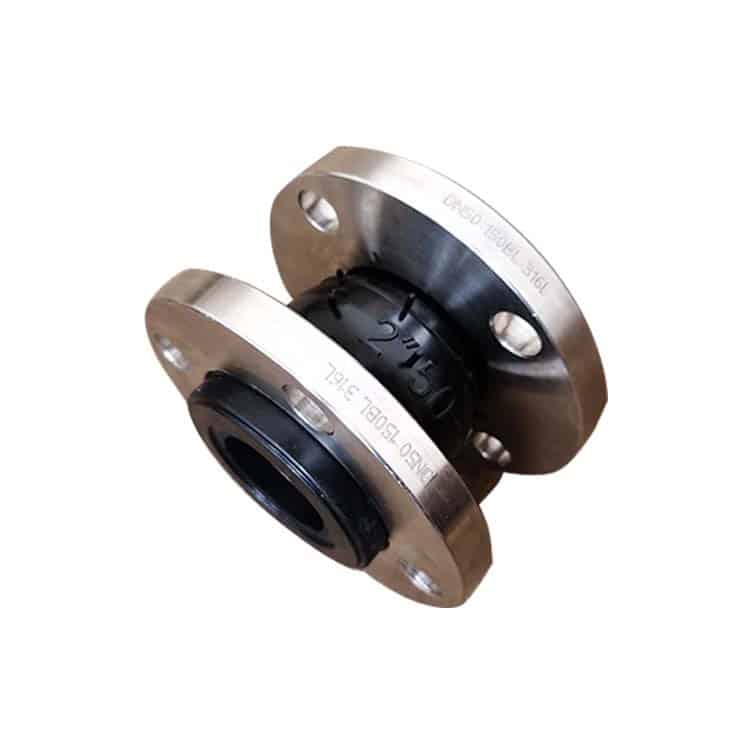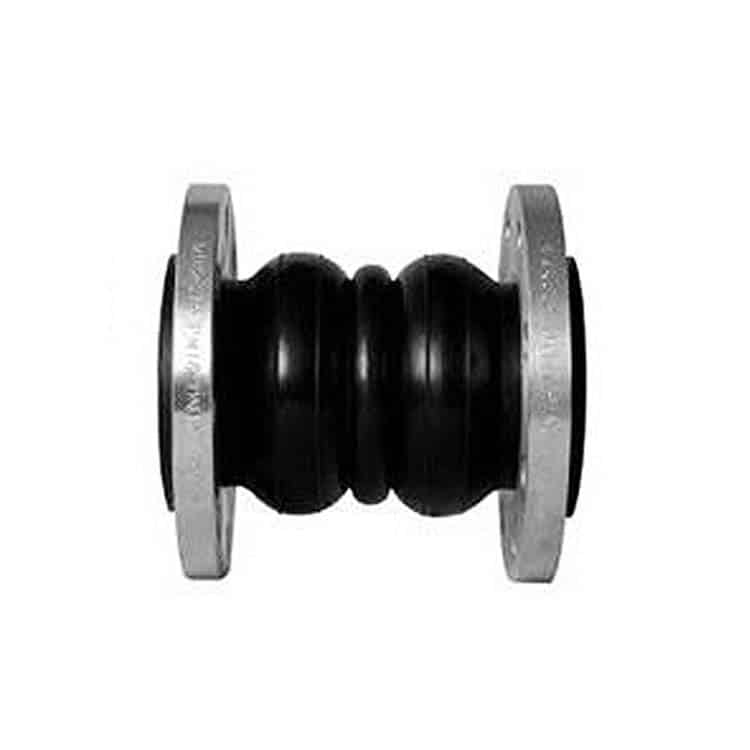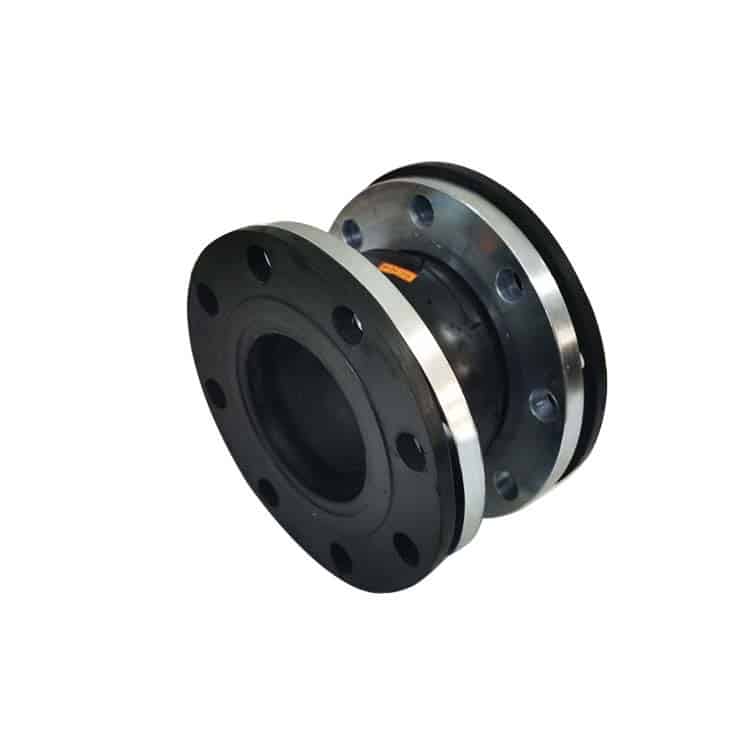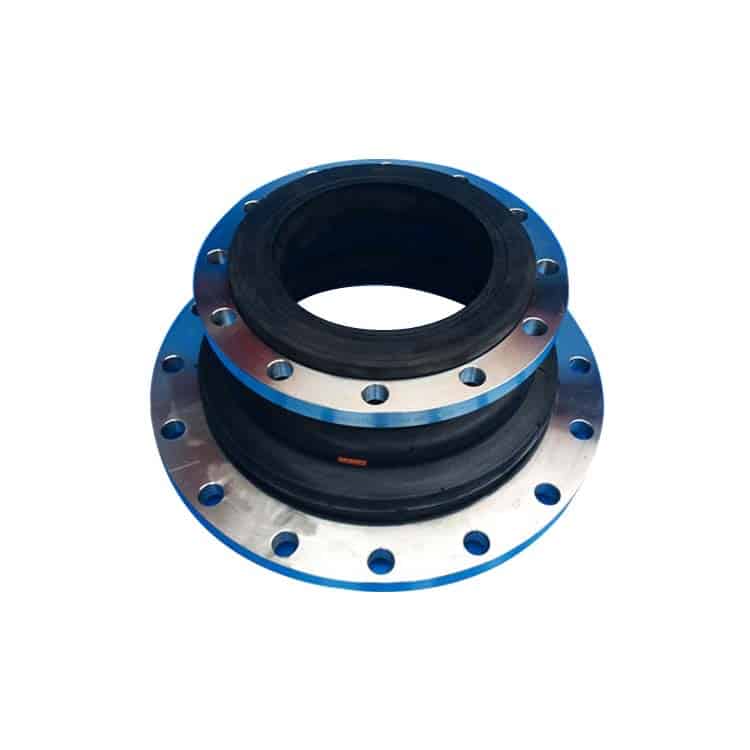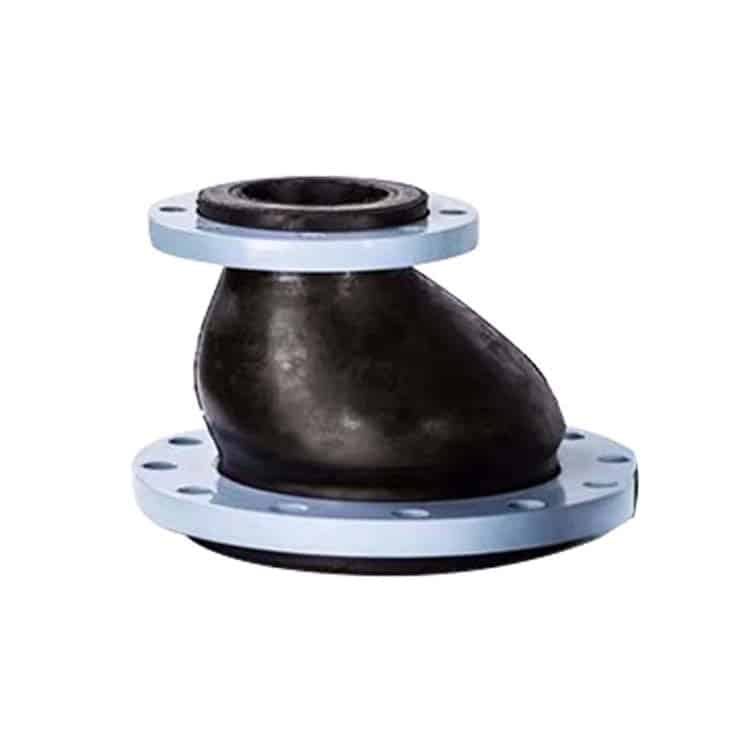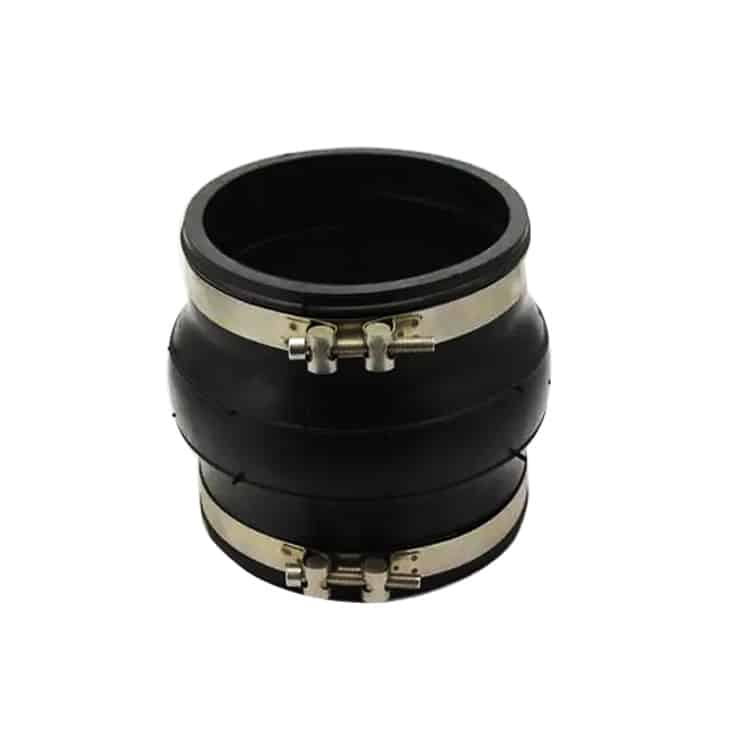Rubber Expansion Joint
Rubber expansion joint, also know as flexible rubber joint, rubber expansion bellows, flexible rubber expansion joint, rubber bellow expansion joint etc, It can be installed in the pipeline to absorb the horizontal, axial and angular displacement caused by the vibration of the pipeline, and can be used for pipelines with different centers and non-parallel flanges.It also can reduce vibration and noise, and can compensate for thermal expansion and contraction caused by temperature changes.
As a rubber expansion joint manufacturer from china, judberd can offer below type rubber expansion joints
- Name rubber expansion joint
- Feature flanged,single sphere
- Material Flange :Carbon Steel/Stainless Steel/Ductile Iron etc;Sphere: NR,EPDM,CR,IIR,NBR,VITON etc;Skeleton: Nylon;Ring:Steel
- Pressure PN6/PN10/PN16
- Name rubber expansion joint
- Feature flanged,Double sphere
- Material Flange :Carbon Steel/Stainless Steel/Ductile Iron etc;Sphere: NR,EPDM,CR,IIR,NBR,VITON etc;Skeleton: Nylon;Ring:Steel
- Pressure PN6/PN10/PN16
- Name rubber expansion joint
- Feature Threaded,Double sphere
- Material Threaded Union :Malleable Iron etc;
- Sphere: NR,NBR,EPDM etc;Skeleton: Nylon cord fabric; Pressurized ring:steel wire
- Pressure PN16
- Name rubber expansion joint
- Feature flanged,Single sphere, With full face flange rubber gasket
- Material Flange :Carbon Steel/Stainless Steel/Ductile Iron etc;Sphere: NR,EPDM,CR,IIR,NBR,VITON etc;Skeleton: Nylon;Ring:Steel
- Pressure PN6/PN10/PN16/PN25
- Name rubber expansion joint
- Feature flanged,single sphere,with tie rods to avoid Hyperextension,with reinforcing ring to afford vacuum pressure or bigger working pressure
- Material Flange :Carbon Steel/Stainless Steel/Ductile Iron etc;Sphere: NR,EPDM,CR,IIR,NBR,VITON etc;Skeleton: Nylon;Ring:Steel
- Pressure PN6/PN10/PN16
- Name flexible rubber joint with PTFE Lining
- Feature flanged,single sphere
- Material Flange :Carbon Steel/Stainless Steel/Ductile Iron etc;Sphere: NR,EPDM,CR,IIR,NBR,VITON etc;Skeleton: Nylon;Ring:Steel;Inner Lining:PTFE for high temperature and corrosion resistant
- Pressure PN6/PN10/PN16
- Name Silicone rubber expansion joint
- Feature flanged,single sphere
- Material Flange :Carbon Steel/Stainless Steel/Ductile Iron etc;Sphere: silicone rubber for food grade pipeline ;Skeleton: Nylon;Ring:Steel
- Pressure PN6/PN10/PN16
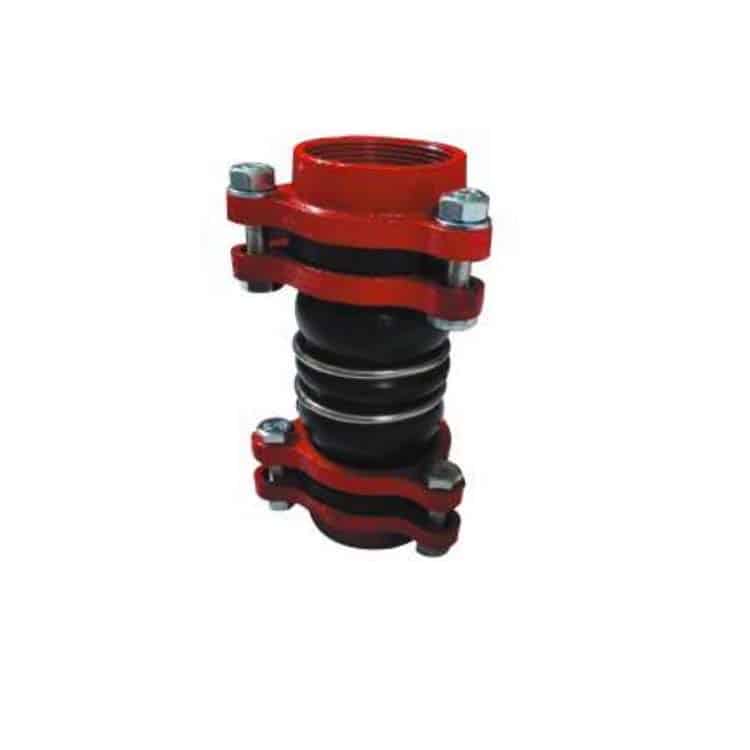
- Name Thread type epdm expansion joint
- Feature Threaded,Double sphere
- Material Union :Malleable Iron etc;Sphere: Neoprene,NBR,EPDM ;Skeleton: Nylon;Ring:Steel
- Pressure PN6/PN10/PN16
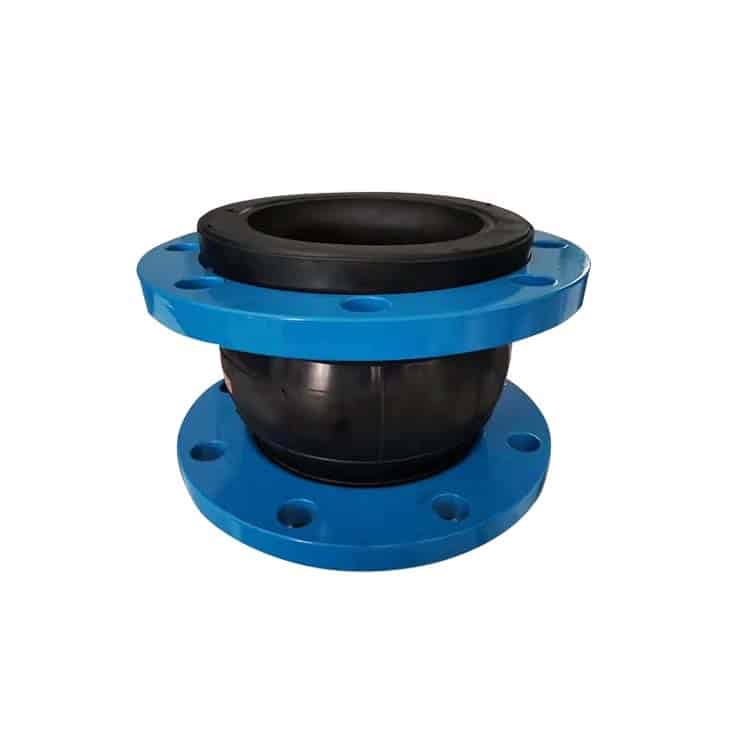
- Name Flexible rubber expansion joint
- Feature flanged,single sphere
- Material Flange :Carbon steel with FBE coating etc;Sphere: NR,EPDM,CR,IIR,NBR,VITON etc;Skeleton: Nylon;Ring:Steel
- Pressure PN6/PN10/PN16
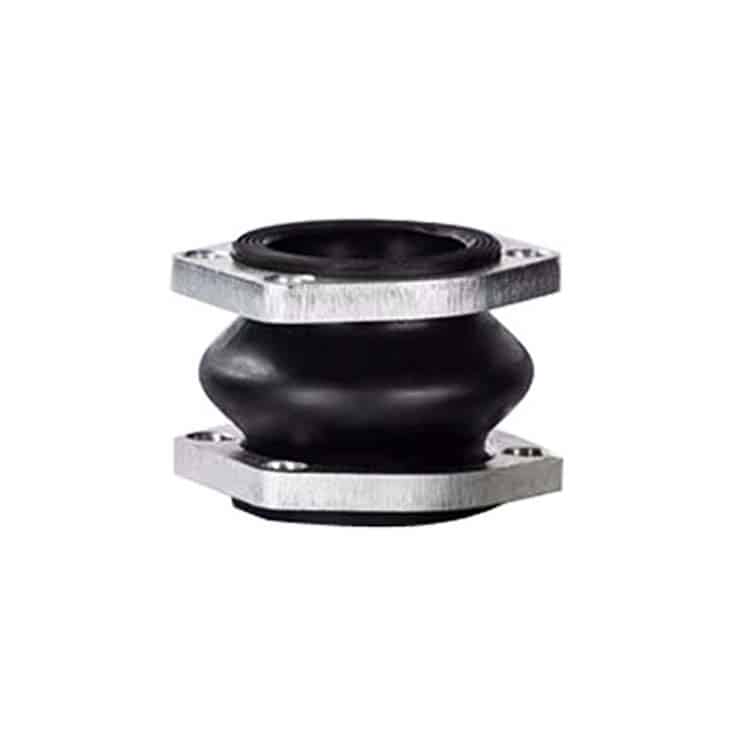
- Name Rubber bellow expansion joint
- Feature flanged,single sphere
- Material Flange :Carbon Steel/Stainless Steel/Ductile Iron etc;Sphere: NR,EPDM,CR,IIR,NBR,VITON etc;Skeleton: Nylon;Ring:Steel
- Pressure PN6/PN10/PN16
- Name Rubber expansion bellows-Concentric reducer
- Feature flanged,double sphere
- Material Flange :Carbon Steel/Stainless Steel/Ductile Iron etc;Sphere: NR,EPDM,CR,IIR,NBR,VITON etc;Skeleton: Nylon;Ring:Steel
- Pressure PN6/PN10/PN16
- Name flanged expansion joints-Eccentric reducer
- Feature flanged,double sphere
- Material Flange :Carbon Steel/Stainless Steel/Ductile Iron etc;Sphere: NR,EPDM,CR,IIR,NBR,VITON etc;Skeleton: Nylon;Ring:Steel
- Pressure PN6/PN10/PN16
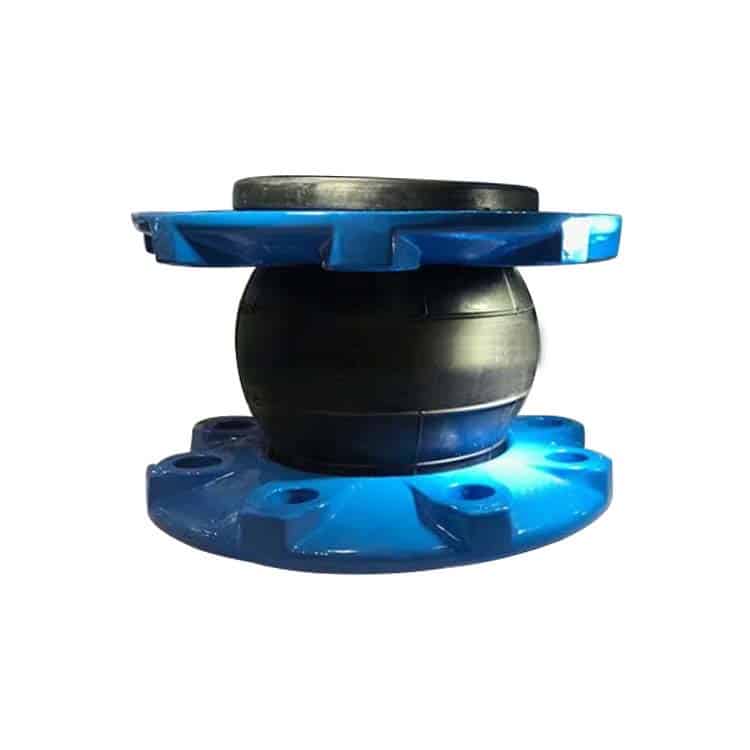
- Name Flexible rubber expansion joint
- Feature flanged,single sphere
- Material Flange :Ductile iron with FBE coating etc;Sphere: NR,EPDM,CR,IIR,NBR,VITON etc;Skeleton: Nylon;Ring:Steel
- Pressure PN6/PN10/PN16
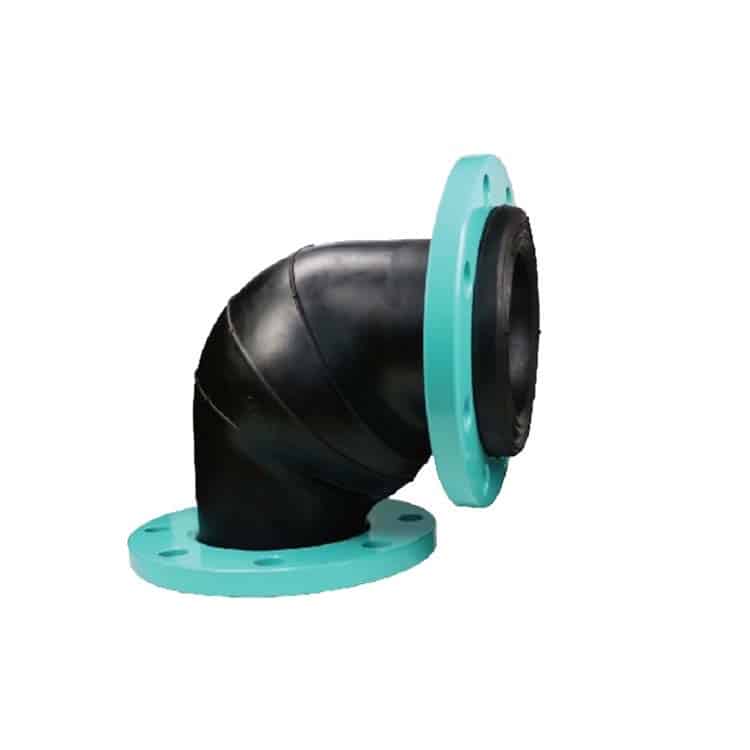
- Name Flanged rubber bellows-Bend type
- Feature flanged,single sphere
- Material Flange :Carbon Steel/Stainless Steel/Ductile Iron etc;Sphere: NR,EPDM,CR,IIR,NBR,VITON etc;Skeleton: Nylon;Ring:Steel
- Pressure PN6/PN10/PN16
- Name Rubber expansion joint coupling
- Feature Clamped,single sphere
- Material Clamp :Carbon Steel/Stainless Steel etc;Sphere: NR,EPDM,CR,IIR,NBR,VITON etc;Skeleton: Nylon;Ring:Steel
- Pressure PN6/PN10/PN16
How to produce rubber expansion joint?
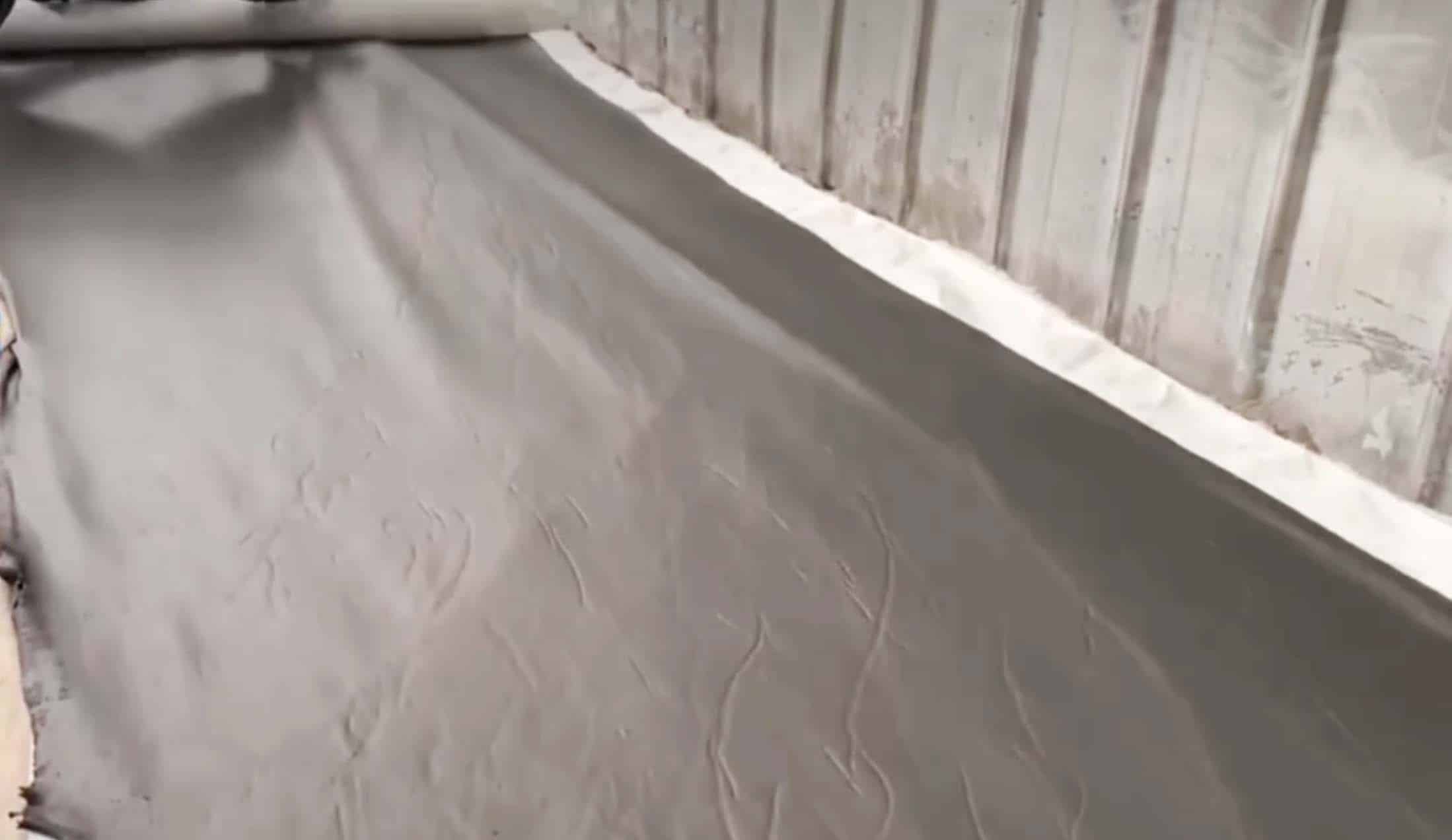
Pressed rubber sheets
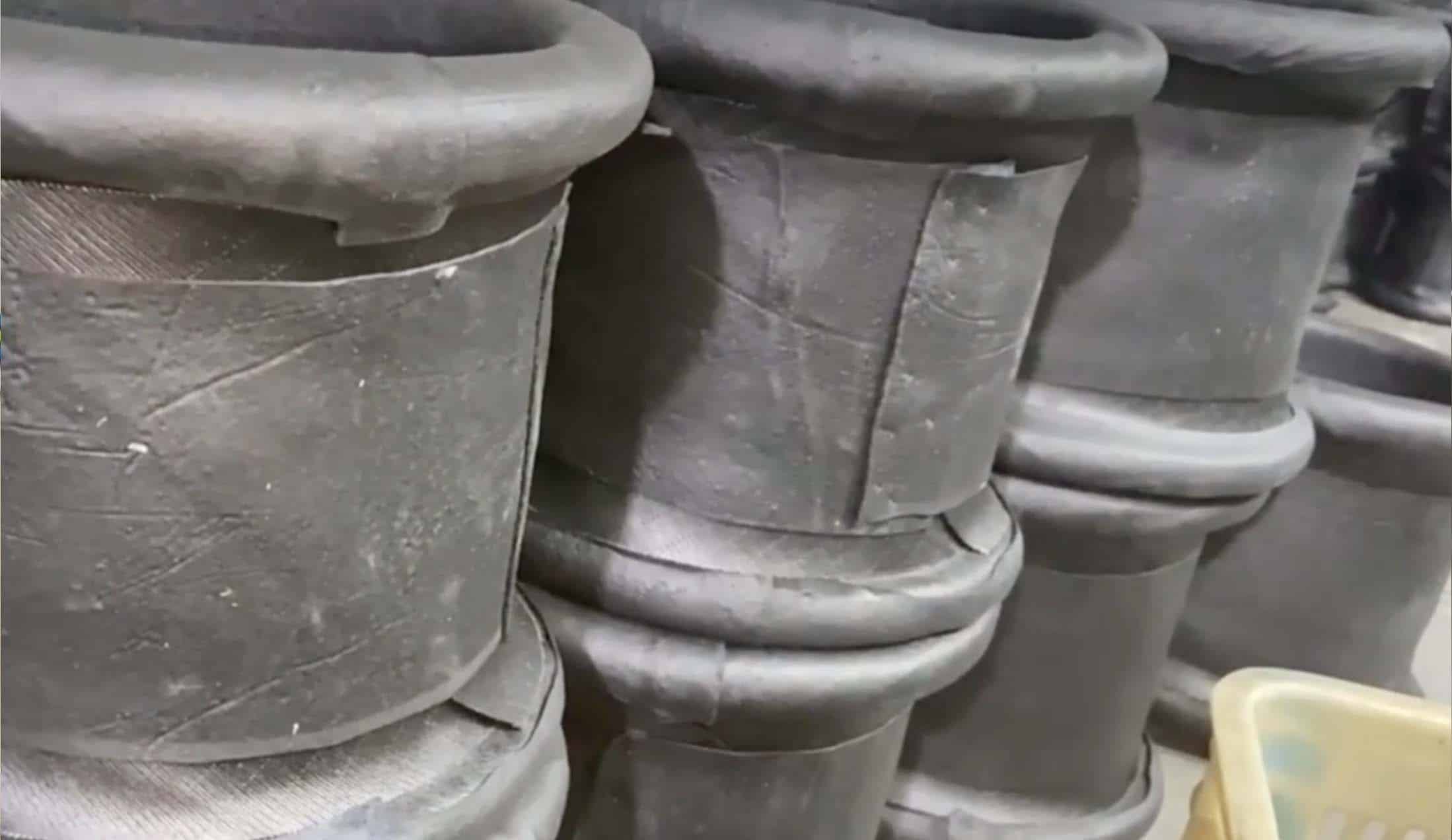
Shaping
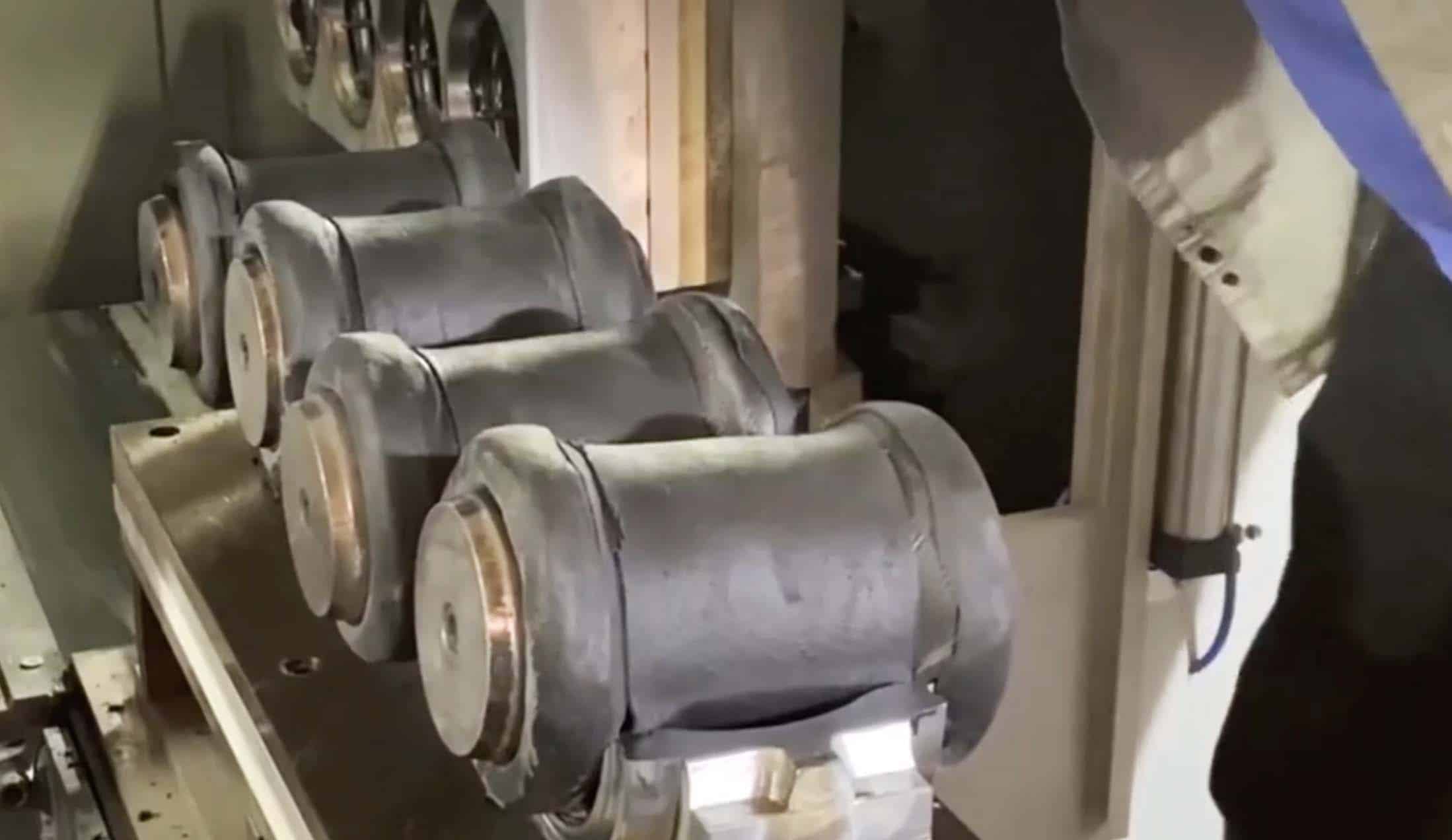
Prepared for vulcanisation
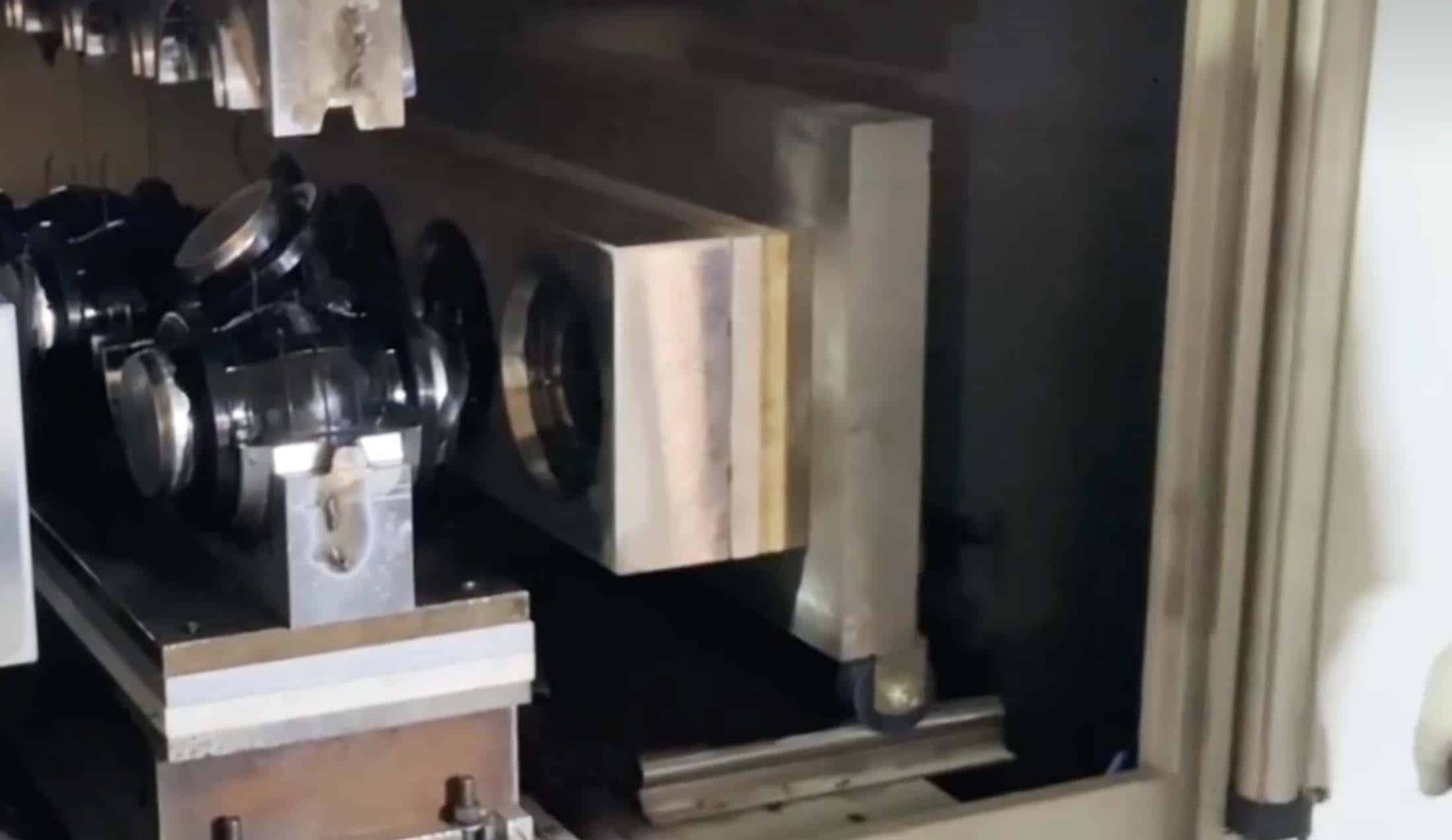
Vulcanisation (180℃ 40minutes)
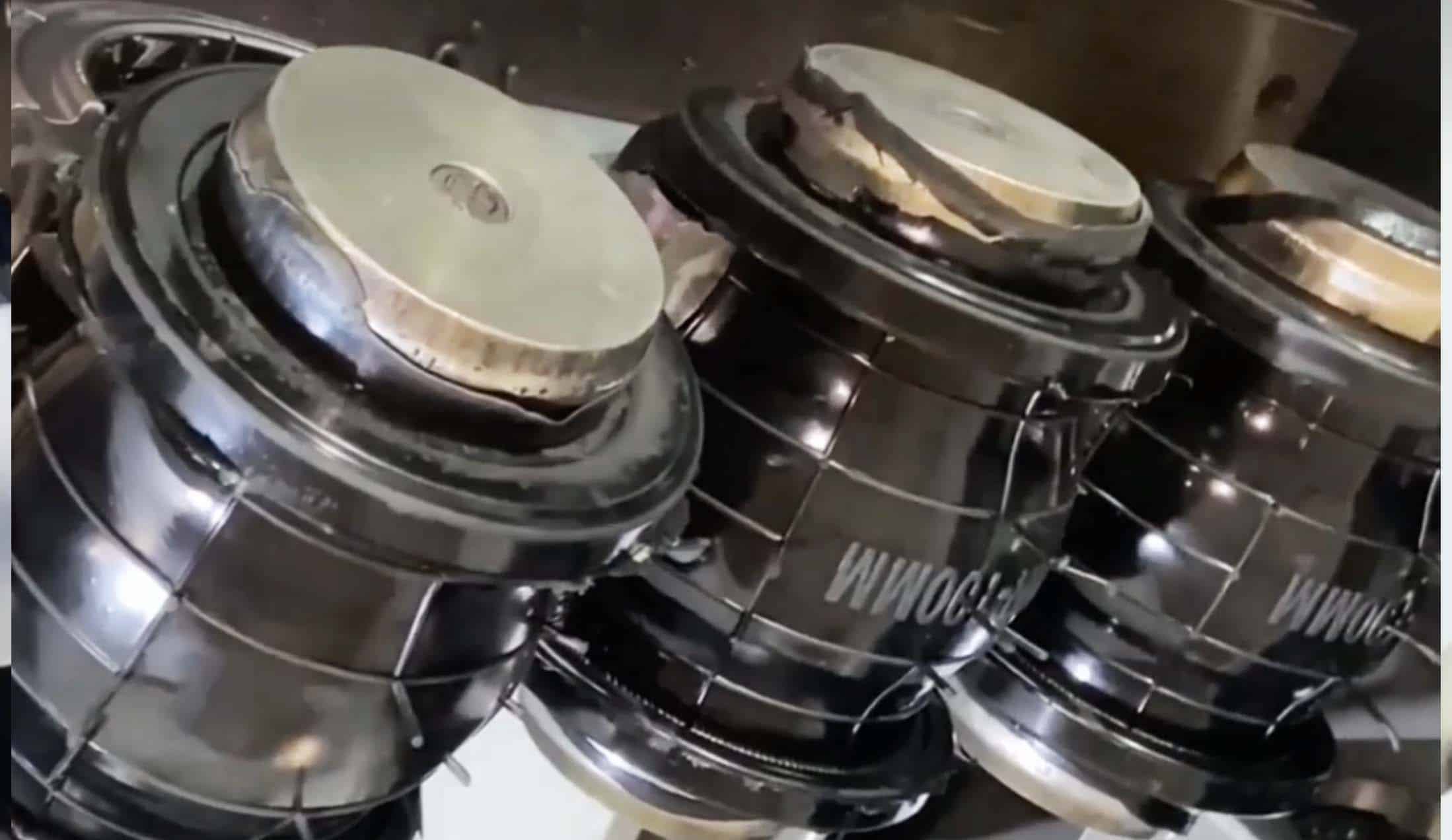
Vulcanisation completed
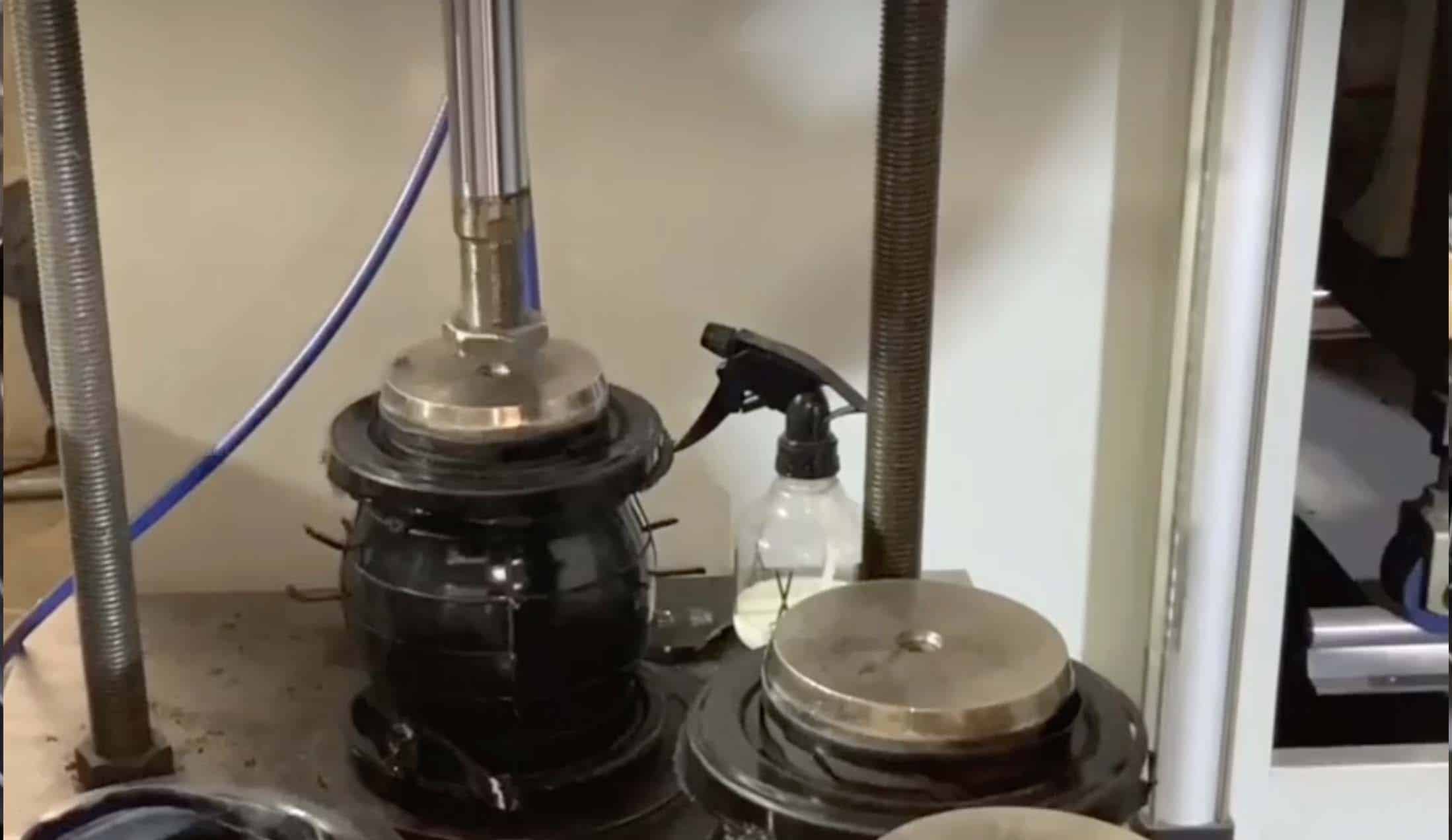
Separation of moulds and rubber balls
Then we can inspect and repair of rubber balls, install flanges, unions or clamps to the rubber ball.
How judberd inspect rubber expansion joint?
1. Product inspection classification
Products must be inspected by the quality inspection department of the production plant before leaving the factory. Product inspection is divided into two types of factory inspection and type inspection.
2 Type inspection
One of the following circumstances, the type test should be carried out.
a. New products or old products transferred to the production of pilot final identification.
b. precisely after production, such as product structure, materials, processes have a large change, may affect product performance.
c.When normal production, once every six months.
d. Product after a long hiatus, when resuming production.
e. factory test results and the results of the last type test when there are large differences.
f. State quality supervision agencies to carry out type testing requirements.
3. Product sampling rules
1). The form and position of the end reinforcement wire ring
Once a month, two pieces of any one size and one type of product shall be selected for X-ray fluoroscopic inspection. If one of the test results fails, two pieces shall be taken from the product for retesting. If one piece still fails, the product shall be judged as unqualified.
2). Hydraulic test
The products with nominal internal diameter below 300mm shall be randomly tested once every quarter, the products with nominal internal diameter 350mm-1000mm shall be randomly tested once every six months and the products with nominal internal diameter above 1200mm shall be randomly tested once every year. Each sample test is carried out on two pieces of any one specification and one type of product. If the test result is unqualified, two pieces of the product will be taken for retesting. If there is still a failed product, the batch shall be judged as unqualified.
3). Vacuum resistance
Once every six months, two pieces of any one specification and one type of product shall be selected for each sampling test. If the test result is unqualified, two pieces of the product shall be taken out from the batch for re-inspection. If there is still one unqualified product, the batch shall be judged as unqualified.
4). Displacement performance
Each specification in each production batch shall be tested once. Two pieces of each specification shall be taken for displacement performance test. If one product fails the test, two more products shall be taken from the batch for re-testing. If there is still one unqualified product, the batch shall be judged as unqualified.
5). Physical properties of adhesives
Aging properties are tested quarterly and other properties are tested monthly. Each time a rubber is taken and tested for the specified items. If one of them fails, a double sample shall be taken to retest the item. If there is still one failed item, the batch shall be judged as unqualified.
6). Adhesion strength
Every six months, two specimens shall be taken from products with nominal internal diameter of 100mm or more for testing. If one of the test results fails, two other samples shall be taken from the batch for retesting. If there is still one unqualified product, the batch shall be judged as unqualified.
7). Water quality inspection
Under normal production conditions, the test is conducted once a year, but when the rubber formula has changed, the rubber sample should be sent for testing at any time. Each time to take a rubber in the provisions of the project test. If the test result is not qualified, two other samples should be taken from the batch for re-testing. If there is still one unqualified product, the batch will be unqualified.
How to Store and transport rubber expansion joint?
Marking, packaging, transport, storage
1). Marking
The product should have a permanent marking containing at least the following: the name of the manufacturer, the name of the product, the product specification, the model number and the working pressure.
2). Packaging
The product shall be packaged according to the agreement between supply and demand. The packaging should be accompanied by a valid product certificate of conformity, including the product name, product mark, production date, manufacturer’s name, factory address, trademark and execution standard number.
3). Transport and storage
The product should be stored and transported in such a way as to avoid direct sunlight, rain and snow, sharp gas scratches and contact with acids, alkalis, oils and various organic solvents. The storage place of the products should be more than 1m away from the heat source and the environment should be 15℃-40℃. The quality and performance of the rubber joints should meet the standard requirements within the storage period of one year from the date of production.

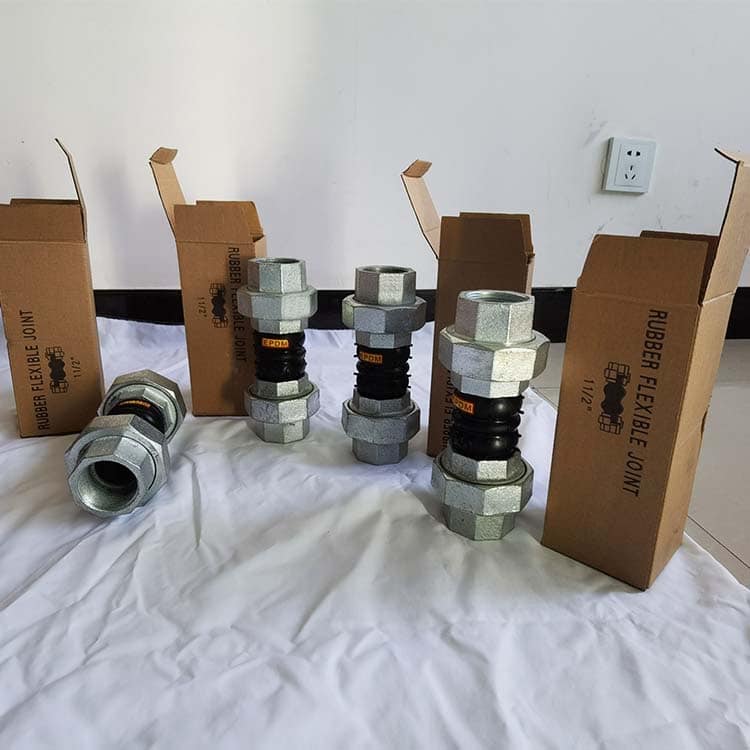
Technical standards for rubber expansion joint
Working pressure: The test pressure of the rubber joint is 5 times of the working pressure and the burst pressure is 3 times of the working pressure.
Vacuum resistance: for rubber joints with nominal inner diameter below 300mm and working pressure above 1.6Mpa, the vacuum resistance is not less than 100Kpa, for other specifications, the vacuum resistance of the head is stipulated by the agreement between supply and demand.
Safety evaluation of rubber joints used in drinking water system: Safety evaluation of rubber joints used in drinking water system
When the rubber joint is used in the drinking water system, the water quality after passing the product should conform to the relevant regulations and requirements of GDWQ published by WHO ” 21 MARCH 2022 Guidelines for drinking-water quality:”
Requirements for metal flanges and flat joints: metal flanges shall conform to the requirements of EN1092-2, ANSIB16.47, ANSIB16.5, AS4087 etc standard, and malleable joints shall conform to the requirements of Standard: ISO 49 / EN 10242.
Requirements when the end face of the rubber joint is reinforced with steel wire rings: When the end face of the rubber joint is reinforced with steel wire rings, the steel wire rings shall remain round and shall be located in the same plane.
How to choose rubber expansion joint?
The type of rubber expansion joint should be determined according to the material in the pipeline, pipeline connection method, assembly components (parallel line pipes or bends) and pressure. The number of rubber expansion joints is calculated according to the expertise of the offset. It is installed in the inlet and outlet of the centrifugal pump, and the rubber damping pad is installed under the inert block of the centrifugal pump set for the total static data reduction. In addition to the offset value,When installed vertically, take the low value of radial extension or radial narrowing offset easy to consume, and horizontal installation take the horizontal offset scalar value.
Rubber expansion joint material should be suitable for its own transport of raw materials, such as nitrile rubber flexible connection for the transport of oil raw materials, silicone rubber can transport high and low temperature liquids, etc.. However, if you do not use the right rubber expansion joint, then it will cause damage to the structure of the rubber expansion joint inner rubber layer. When the working pressure is high, you can choose a flange rubber joint with integrated full face flange gasket and rubber ball. In order to better prevent the ball from breaking due to the instantaneous rise of the working pressure of the pipeline, you should choose the rubber expansion joint with full face flange gasket or rubber expansion joint with limit rods /control rods.
Rubber joints can be adapted to specific water supply pipeline environments. For example, installing nitrile rubber joints on oil-resistant pipes can effectively avoid rupture and pull-off due to local expansion of the sphere caused by molecular expansion of rubber joints.
How to install rubber expansion joint?
Rubber expansion joint are used to connect pipeline equipment, which can reduce vibration and noise and compensate displacement. It can reduce the vibration and noise generated when the pipeline is running, and it can absorb the size change of the pipeline due to thermal expansion and contraction within the permitted range. It cannot bear the internal pressure thrust of the pipeline, blind force, therefore, there should be fixed brackets at both ends of the rubber joint, or use rubber expansion joint with limit rods.
Please note the following issues when installing and using rubber expansion joint.
1,Rubber expansion joints are strictly prohibited to be installed beyond the displacement limit.
2,When installing rubber expansion joint on flat ground, overhanging or vertically, the actual working axial displacement pressure of rubber joints is less than the support force of the pipeline, otherwise anti-pull-off devices should be installed to prevent pulling off under pressure when working.
3,The pipeline must have a fixed support or fixed bracket, and the force of the fixed bracket must be greater than the axial force.For vertical and overhead installation, corresponding fixed brackets and force brackets should be installed at both ends of the product to prevent pulling off under pressure at work.
4,The installation bolts should be tightened symmetrically and gradually to prevent local leakage.
5,The installation should be far away from the heat source, and the use of media that do not meet the requirements of this product is strictly prohibited.
Connection Mode
Generally there are thread connection, flange connection, clamp connection etc, Execution Standard:HCRJ 070-1999
Caution
1,When installing the bendable rubber joint in the pipeline, it must be in its natural state, do not artificially deform the product. When the pipeline medium is acid and alkali resistant, oil, high temperature and other special materials a joint higher than the working pressure of the pipeline should be used.
2,The flange of the rubber joint should conform to the flange standards required by the customer, such as EN1092-1,BS4504,ANSI B16.1,ANSIB16.5,AS4087 etc
3,Rubber expansion joint normal applicable medium is the temperature 0-60℃ Ordinary Water, Special Media Such As Oil, Acid And Alkali, High Temperature And Other Corrosive And Hard Texture Of The Case, Should Be Selected Corresponding To The Special Resistant Material Rubber Joints, Not Blindly String With Or General.
4, When rubber expansion joints are used in the import and export of water pumps, they should be located on the side of the water spring, and metal reducer joints should be installed between the water spring and the rubber expansion joint, and installed at the large diameter of the reducer.
5,When the displacement of the pipeline is greater than or equal to the maximum compensation of the joint, the number of joints should be increased to parallel the displacement, and it is strictly forbidden to make the joint in the limit of flexural displacement and deviation in order to adjust the pipeline’s super-difference ,and not to exceed the limit(expansion ,displacement, deflection etc)
6, For high-rise water supply or overhanging water supply, the pipe should be fixed on a hanger, bracket or anchor frame, and the joint should not be allowed to bear the pipe’s own weight and axial force, otherwise the joint should be equipped with an anti-pull- off device(it bearing force must be greater than the pipe axial force).
7,When installing the rubber expansion joint, the screw of the bolt should be extended to the outside of the joint, and the bolt of each flange end face should be tightened repeatly and evenly according to the method of diagonal pressurization to prevent pressure deviation.The threaded joint should be tightened evenly with standard spanners, do not use force to make the live joint slip silk, slip prongs and fracture, and should be checked regularly to avoid loosening resulting in dislodgement or water speepage.
8,After the first time the rubber joint is under pressure(e.g. installation test pressure etc) or before starting again after a long period of disuse, the bolt should be re-pressurized and tightened before putting it into operation.
9,Avoid high temperature, ozone oil, acid and alkaline environment when using or storing rubber expansion joints.For pipes used outdoors or facing the sun and wind , a shade frame should be set up and sun screen, rain and wind are strictly prohibited, painting and winding of insulation materials are strictly prohibited on the surface of the joint.Due to the aging problem of rubber products, they should be checked and replaced in time.
10,When installing rubber joint on flat ground, overhead or vertically, the actual working axial displacement pressure of rubber joints should be less than the supporting force of the pipeline, otherwise anti-pull off devices should be installed to prevent the work from being pulled off under pressure.
11,Rubber Joints should be kept away from heat sources and ozone areas, and strong radiation is strictly prohibited.Exposure to sunlight and the use of media that do not meet the requirements of this product are strictly prohibited.
12,Rubber expansion joints should be transported, handled and installed in such a way that sharp instruments are not allowed to scratch the sealing surface.
13,Rubber joints should have fixed brackets at both ends, otherwise, restrictive rubber joints should be used.
The main body of a rubber joint is a rubber hose, which does not reach the same hardness and strength as a metal pipe fitting, when the pipeline is running, the fluid flows out through the pump pressure and meets the elbow or blind plate, generating internal pressure thrust, which will displace the pipeline. To solve this problem, rubber joints should be set up with fixed brackets at both ends to offset the internal pressure of the pipe and prevent the joint from elongation.It is important to know that although rubber joints have elongation characteristics, they are only used to compensate for changes in the size of the pipeline due to thermal expansion and contraction, and can’t withstand the elongation of the pipeline.
- Example of rubber joint installation with fixed bracket.
Installation Legend
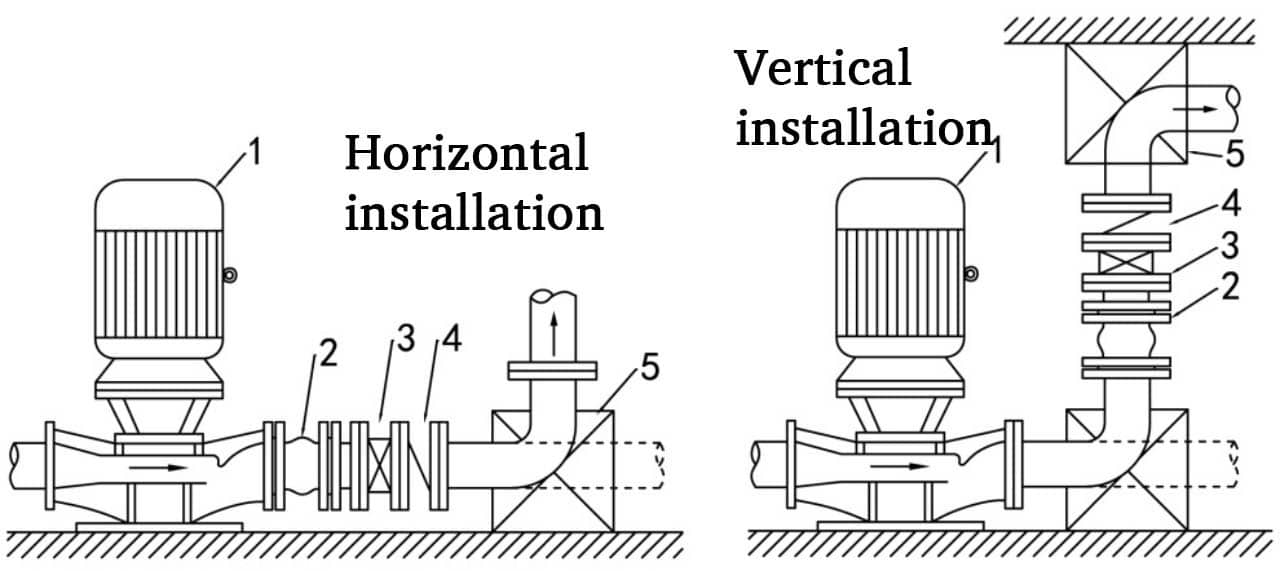
1、pump;2、rubber joint;3、check valve;4、valve;5、a fixed
14.When a rubber expansion joint have flange ends, the other products connected to the flange of the rubber expansion joint must have a standard flange size, and if the sealing surface of the other products is very narrow, it will cause damage to the rubber surface of the rubber joint. This is forbidden if the sealing surface of the other product is very narrow, as shown below.
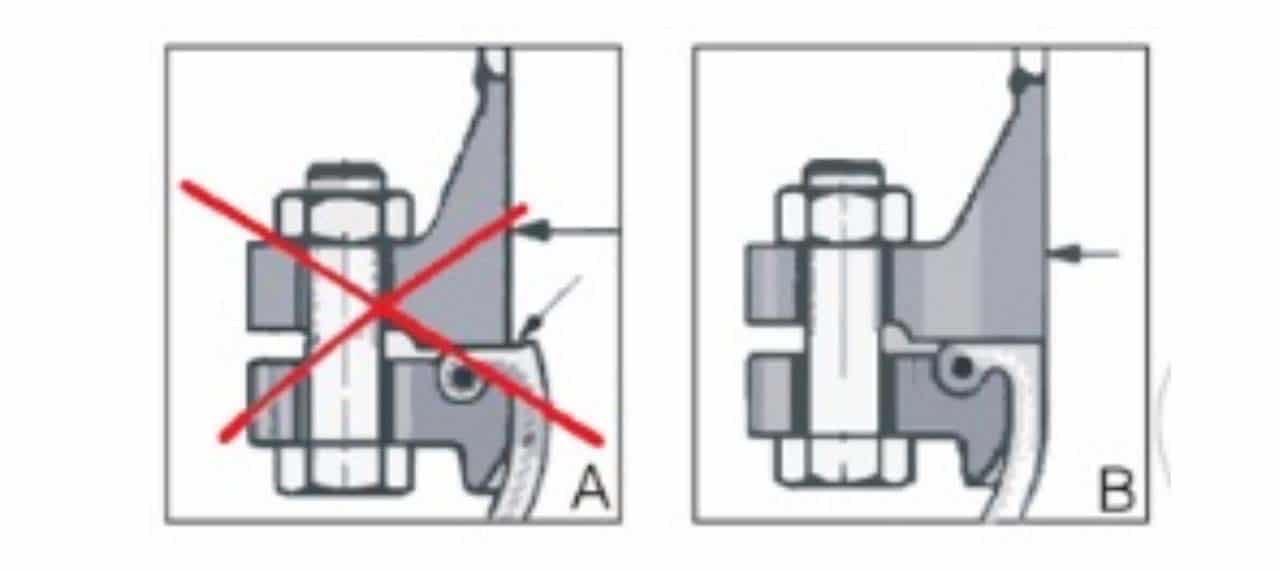
Figure A, where the connection is made, the pipe flange inner diameter is larger and the inner opening cuts into the sealing surface of the rubber joint, which can cause damage to the sealing surface during the installation work, which is incorrect.
Fig. B, the inner diameter of the pipe flange is as large as the inner diameter of the rubber joint, which is correct.
15,When installing the tie rods, washer is needed ,gradually and symmetrically tighten the bolts,each time before turning on the pump, the nuts should be tighten with pressure again, repeatedly, until the nuts are no longer loose.
16,According to the fluid direction, there should be a check valve after the rubber joint (see installation legend as above), when the pump stops, the check valve closes in time to effectively eliminate water hammer and protect the safety of the rubber joint and the pump.
17,The length of the rubber joint should be equal to the spacing between the pipes and can’t be artificially stretched or shortened after installation.If the length does not match, the pipe spacing must be adjusted or the product must be replaced with another length.Artificially elongated installation may cause damage to the product or prevent it from functioning properly as a rubber joint.
Rubber joints have the characteristics of axial elongation and compression, lateral displacement and angular deflection, however, installation and use beyond the displacement range may damage the produce.Please refer to our catalogue for displacement data.
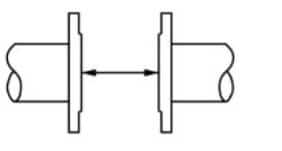
Rubber expansion joint Length=The Length between two flanges which rubber expansion joint should connect to

Axial elongation Axial compression Lateral displacement Angular deflection
18,The larger the rubber joint size, the lower the working pressure.
The higher the temperature of the medium, the lower the working pressure. (See chart as below)
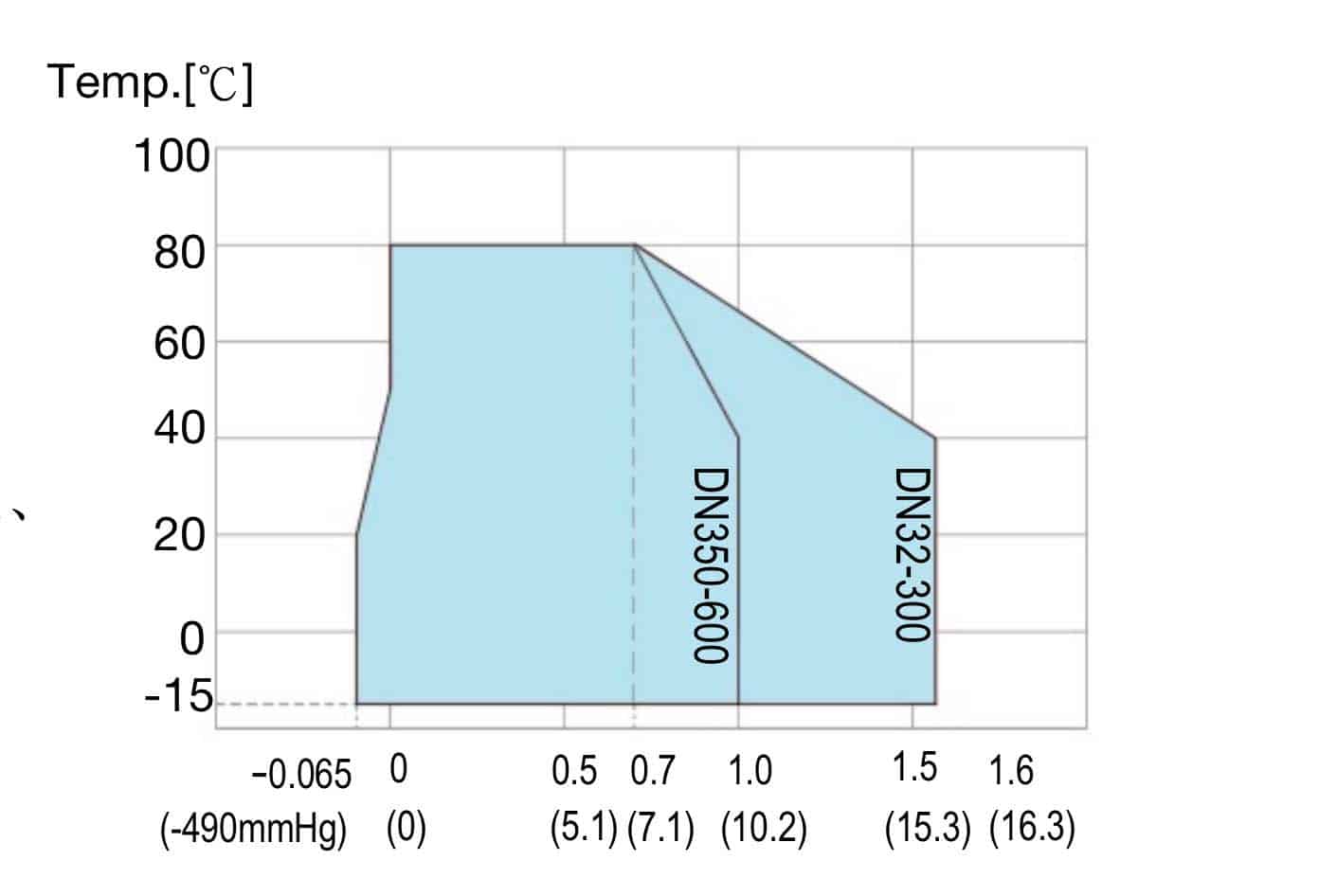
Rubber material classification of rubber expansion joint
The Rubber Ball Material Of Rubber Expansion Joint Is The Concern Of Many Customers, The Material Of Rubber Ball Plays A Decisive Role In The Quality Of Rubber Expansion Joints, The Material Of Rubber Ball Is Generally Divided Into Two Kinds, Natural Rubber And Synthetic Rubber.
There Are A Few Varieties Of Synthetic Rubber With Properties Similar To Natural Rubber, And Most Of Them Are Different From Natural Rubber, But The Most Significant Feature Common To Both Is The High Elasticity, Which Generally Needs To Be Vulcanized And Processed To Have Practicality And Use Value.
The Rubber Expansion Joints Produced By Synthetic Rubber Are Generally Custom-Made Products, Suitable For High Pressure, High Acidity, High Temperature Etc. Pipe Line Which Need To Synthesize Rubber For Customer According To The Characteristics Of Rubber, So As To Achieve Better Results.
Natural Rubber Is Generally Used For Drinking Water Pipeline Or Pure Water, Natural Rubber Has High Rubber Content, So The Life Of Use Will Be Longer Than Other Rubber Time, Natural Rubber Will Not Cause Pollution To The Medium , If It Is Drinking Water Or Pure Water, We Recommend The Use Of Natural Rubber.
How to choose the right rubber for expansion joint?
You can follow between Forms
Note “RT” means Normal temperature “AB“ means recommended rubber “B” means you can use according to actual conditions,N/A means not applicable
| Fluid | Temperatue(℃) | NR | Butyl rubber | NBR | Neoprene | Ethylene-propylene rubber | Silicone | Fluorine rubber | Epichlorohydin rubber | |
|---|---|---|---|---|---|---|---|---|---|---|
| NR | LLR | NBR | CR | EPDM | Si | N/A | CHR | CHC | ||
| Seawater | 90 | AB | AB | AB | AB | AB | N/A | N/A | AB | AB |
| Hot water | 90 | N/A | AB | AB | AB | AB | N/A | N/A | N/A | N/A |
| Steam | 130 | N/A | AB | N/A | N/A | AB | N/A | AB | N/A | N/A |
| Ammonia | RT | AB | N/A | AB | AB | AB | N/A | AB | N/A | N/A |
| Ammonia(30%) | RT | AB | N/A | N/A | AB | AB | N/A | AB | N/A | N/A |
| Hydrochloric acid(10%) | RT | AB | AB | AB | AB | AB | N/A | AB | AB | AB |
| Dry chlorine | RT | N/A | N/A | N/A | N/A | N/A | N/A | AB | N/A | N/A |
| Wet chlorine | RT | N/A | N/A | N/A | N/A | N/A | N/A | N/A | N/A | N/A |
| Nitric acid(10%) | RT | N/A | N/A | B | AB | N/A | N/A | AB | N/A | N/A |
| Sulfuric acid(10%) | RT | N/A | AB | N/A | AB | AB | AB | AB | N/A | N/A |
| Sulfuric acid(30%) | RT | N/A | N/A | N/A | AB | AB | N/A | AB | N/A | N/A |
| Alcohol | RT | AB | AB | AB | AB | AB | N/A | AB | N/A | N/A |
| Caustic sode(50%) | RT | AB | AB | AB | AB | AB | N/A | AB | AB | AB |
| Lubricating oil | 70 | N/A | N/A | AB | N/A | N/A | N/A | AB | AB | AB |
| Fuel oil | RT | N/A | N/A | AB | N/A | N/A | N/A | AB | AB | AB |
| Heavy oil | RT | N/A | N/A | AB | N/A | N/A | N/A | AB | AB | AB |
| Gasoline | RT | N/A | N/A | N/A | N/A | N/A | N/A | N/A | N/A | N/A |
| Volatile oil | RT | N/A | N/A | N/A | N/A | N/A | N/A | AB | N/A | N/A |
| Tar | RT | N/A | N/A | N/A | N/A | N/A | N/A | AB | N/A | N/A |
| Oxygen | RT | N/A | N/A | N/A | N/A | AB | AB | AB | AB | AB |
| Carbon dioxide | RT | AB | AB | AB | AB | AB | N/A | AB | AB | AB |
| Sulfur dioxide | RT | N/A | AB | AB | AB | N/A | N/A | AB | N/A | N/A |
| Natural gas | RT | N/A | N/A | AB | AB | N/A | N/A | AB | N/A | N/A |
| Cog | RT | N/A | N/A | N/A | N/A | N/A | N/A | N/A | N/A | N/A |
| Occurring gas stove | RT | N/A | N/A | AB | N/A | N/A | N/A | N/A | N/A | N/A |
| Blast furnace gas | RT | N/A | N/A | AB | AB | N/A | N/A | N/A | N/A | N/A |
| Vacuum line | RT | N/A | N/A | N/A | AB | N/A | N/A | N/A | N/A | N/A |
| Food and drink | RT | AB | N/A | N/A | N/A | N/A | AB | N/A | N/A | N/A |
What is negative pressure resistant rubber expansion joint?
Negative pressure resistant rubber joint is a single ball rubber joint with a flexible steel plate inside the rubber layer or a double ball rubber joint with a steel plate in the middle of the two balls, so that the rubber joint expands when the pressure is positive, and the steel plate can well block the deformation of the rubber joint when the rubber joint shrinks and absorbs flat when the pressure is negative, to ensure that the shape meets the design requirements, negative pressure resistant rubber joint is resistant to negative pressure and good wear resistance. Steel internal counterflow device is adopted to ensure safe and practical use. The flow guide device is similar to the stainless steel bellows to ensure that the rubber joint will not be flattened in the process of use, and the rubber part will not directly contact the powder or mud medium, which greatly improves the service life of the joint. It is generally used in sewage treatment, waste water treatment and precious metal recovery.
Negative pressure resistant rubber joints are very demanding, pure rubber is not resistant to negative pressure, let’s say the inner diameter of the pipe is 0.1kg of negative pressure, the rubber pipe body will be sucked flat, and the pressure of the pipe to the outside is completely different, so, with negative pressure conditions, the inner diameter must increase the negative pressure guide tube, simply put, the negative pressure guide tube is to add a carbon steel tube in the diameter of the rubber joint, with negative pressure guide tube, the rubber joint will not be sucked flat, In this way, the original vibration isolation and expansion effect of the rubber joint will not be affected. The only thing that is affected is that the inner diameter of the joint becomes slightly smaller.
Negative pressure rubber joints are vibration dampers designed for vacuum negative pressure pipelines. Generally speaking, rubber joints for pump inlets tend to suck flat. For this reason, judberd has introduced vacuum rubber joints mainly for pipeline vibration damping and noise reduction, which are very scalable and easy to use.
For single ball rubber joints, the booster ring is located inside the ball, for double ball rubber joints, if there is negative pressure, the booster ring is added inside the ball, if there is positive pressure, the booster ring is added outside the ball.
Why rubber expansion joint fail?
Pull off: This is because the actual stretching length of the installed pipeline exceeds the limit stretching length of the rubber joint, which leads to the flange being forcibly pulled out from the two ends of the sphere.
Soaking deformation: This happens to common rubber joints installed in oil pipelines. Since oil has a corrosive effect on rubber, long time soaking will make rubber joints swell, which leads to sealing problems and their own quality problems.
Size deformation: The size deformation comes from the strong distortion degree of the pipeline. Due to the large degree of inclination of some pipes, which in turn will lead to its own distortion during transportation.
Leakage: Leakage is mostly caused by irregularities in the installation. During installation, tightening screws is a process that must be paid attention to, and the diagonal twisting method must not be changed, or else there will be a local seal that is not tight.
How to choose a qualified rubber expansion joint manufacturer from China?
Observe the spherical part of the rubber joint carefully and touch it with your hand. If there is a lot of discoloration or micro granular rubber stuck on the hand it means that the quality of this rubber joint is problematic.
Look at the flange: carbon steel flanges are divided into two processes: forging and casting. Cast iron flanges have internal trachoma, poor toughness and chaotic knocking sound.
Take two rubber joints with the same specifications without flanges. Throw them vertically downward from the same height, and the one that bounces high is a good rubber joint sphere, and the one that bounces low is a rubber joint made of unqualified rubber. Put it in the sunlight or light, look at its color, poor rubber in order to imitate the effect of good rubber will go through the oil treatment, the color is black, bright, and good quality rubber joints will show a natural rubber color.
The good rubber joints are made by using the elasticity, high air tightness, medium resistance, weather resistance and radiation resistance of rubber, and are compounded with polyester cord fabric with strong cold and heat stability, and then vulcanized by high pressure and high temperature molds. In addition, a steel wire ring is added to the rubber layer at both ends of the rubber joint, which further improves the performance of the rubber joint and increases its service life. Many manufacturers, in order to cut corners, do not add polyester cord fabric and steel wire rings in the rubber layer, which greatly reduces the pressure resistance of rubber joints in use and sometimes leads to water leakage due to excessive pressure.
How to protect Rubber joint when it is buried ?
The rubber joint buried protection device, with sufficient space around it, will never affect the displacement performance of the rubber joint, and isolate the rubber joint from the external filling, and also enable the pipe to slide freely at both ends of the device without any resistance. After the installation of the pipeline, the ground will be as smooth as before after backfilling and tamping, so that the exercise of vehicles, stacking of heavy objects or installation of equipment will not be affected in any way.
This buried device is a combination of two semi-circular hollow, the rubber joint and pipe flat welding flange all into the body, both ends with a small plane with just riding on both sides of the flange outer round surface and both ends of the vertical support, depending on the depth of the soil, enough to withstand the external pressure of the weight.
The device is equipped with a certain number of pairs of locking bolts to be assembled after installation. The installation method is as follows: install rubber joint → protect the device inside the asphalt antirust paint → install the lower 1/2 protection device → put the upper 1/2 protection device → tighten the pair of locking bolts (pay attention to the installation to ensure that the rubber joint is in the center of the device) → protect the device outside the asphalt antirust paint → backfill the original soil, the lower pounding, the upper tamping → triple soil bedding layer → lay the ground (the best in the appropriate location with (permanent signs for later inspection and replacement to determine the location).
What is the difference between dismantling joint and expansion joint?
The Dismantling Joint function is to shorten the length of the dismantling joint so that valves, manometers, water meters and other instruments can be removed from the pipeline for maintenance or change.
Rubber expansion joint are used to passively produce changes in length and angle due to fluid in the pipeline, thus reducing vibration and noise in the pipeline and compensating for thermal expansion and contraction caused by temperature changes.
What is the most corrosion resistant rubber joint?
PTFE has excellent chemical stability, corrosion resistance, is one of the best materials in the world for corrosion resistance, except for molten metal sodium and liquid fluorine, PTFE can resist all other chemicals, Even boiling in aqua regia it does not change, can be used in a variety of strong acid strong alkali and other media pipeline

